Miniature Glass by Kiva Ford
| Website | Facebook | Instagram |
How did you first get started in glassblowing?
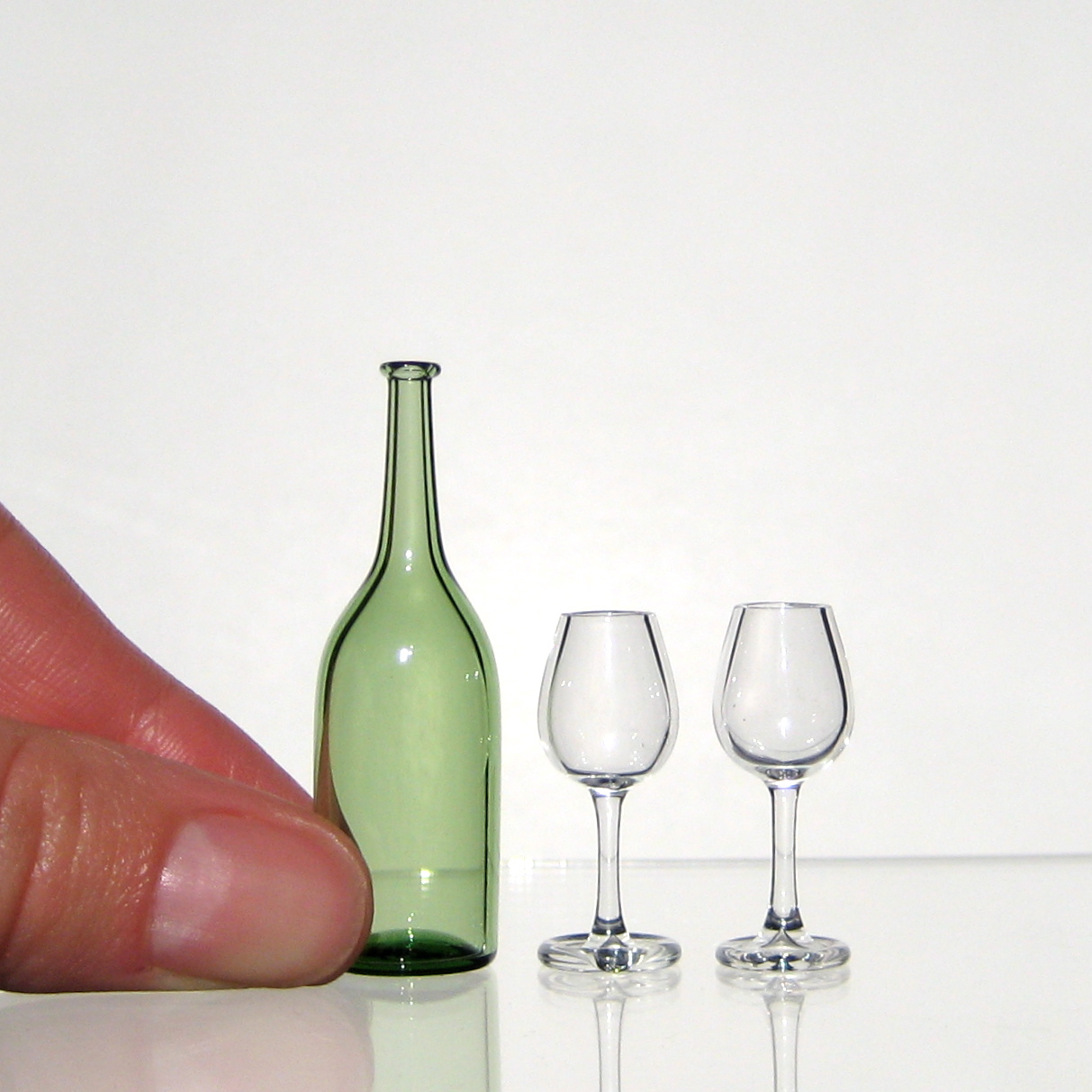 My first memory of glassblowing is at a small town fair. I was enchanted by the process of glassblowing and the way the glass moved while it was molten. After seeing the glass being made, I knew that I wanted to try glassblowing someday.
My first memory of glassblowing is at a small town fair. I was enchanted by the process of glassblowing and the way the glass moved while it was molten. After seeing the glass being made, I knew that I wanted to try glassblowing someday.
What types of blown glass do you make? How has your work evolved?
I have been creating glass going on 14 years now. I am scientific glassblower by trade, and currently I manage the custom scientific glassblowing shop at the University of Notre Dame. I create custom glassware for chemistry, engineering, and physics. I make artistic glass after I get home from work. I feel like my work is constantly evolving. I really enjoy the technical aspect of glassblowing. It is a very difficult and unforgiving material to master.
Describe your process. What’s a day in the studio like?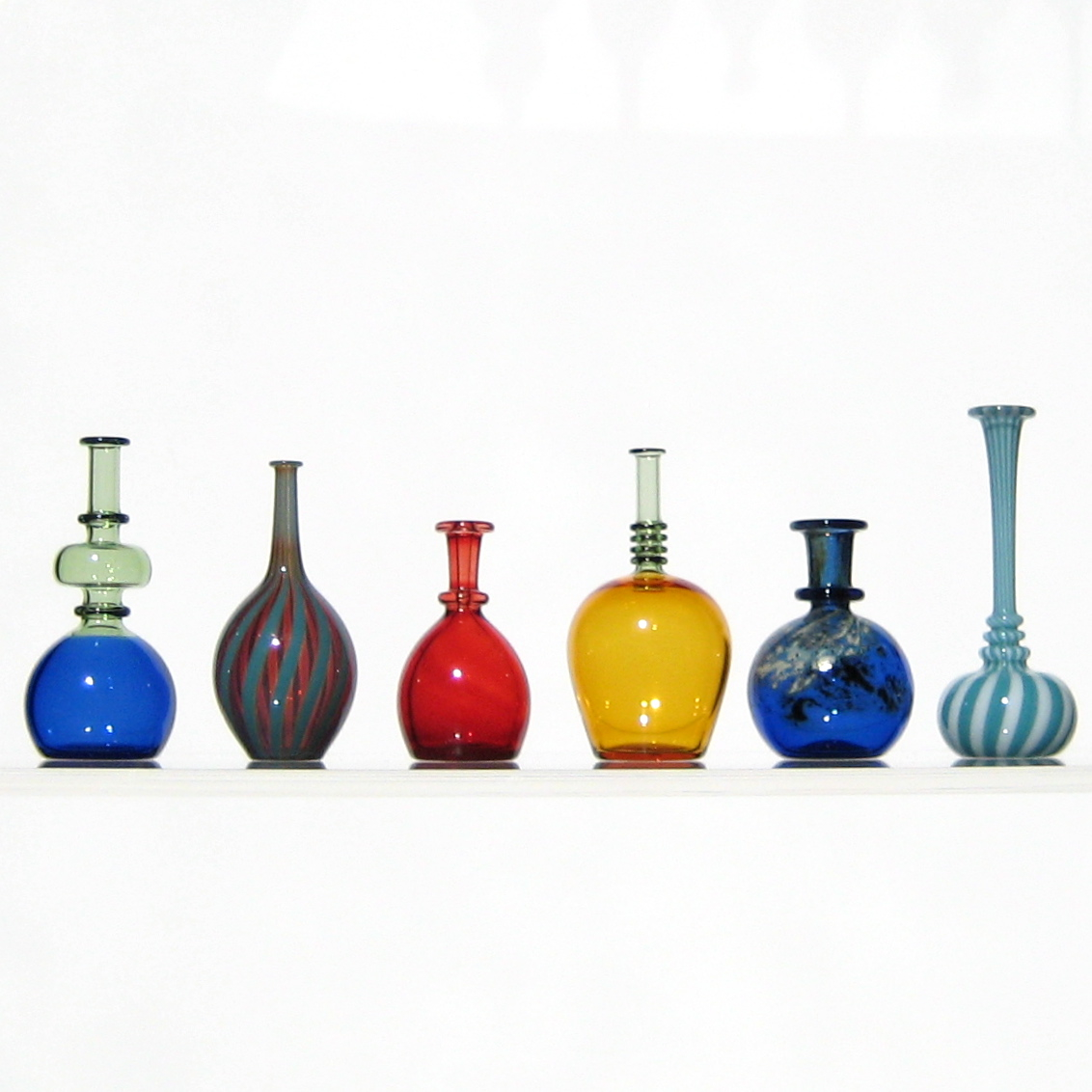
My creative glass studio is in a community based art space called Fire Arts in South Bend, IN. There are all sorts of craftspeople at Fire Arts from bronze casting to stone carving. It is a very inspiring environment. I like to keep my workshop clean and utilitarian. It is important for me to have a clean and organized shop where I can focus on my work without any distractions. I enjoy being next to the St. Joseph River and being able to look at the beautiful water falls that were once used as a source for a hydro-electric power plant in the early 1900s. If you were to walk by my shop when I am working you might hear an eclectic mix of music coming from the garage. Any artist from Ray Charles to The Rolling Stones, to Loretta Lynn.
Before I heat up the glass I need to put on special didymium glasses, which will filter out a bright orange flame that occurs when I heat up the glass. I start by slowly warming in the glass, and introducing it to the heat. If you heat up the glass too quickly, thermal stress will occur which will shatter the glass. Just like an ice cube will crack if you put it in a glass of hot tea. 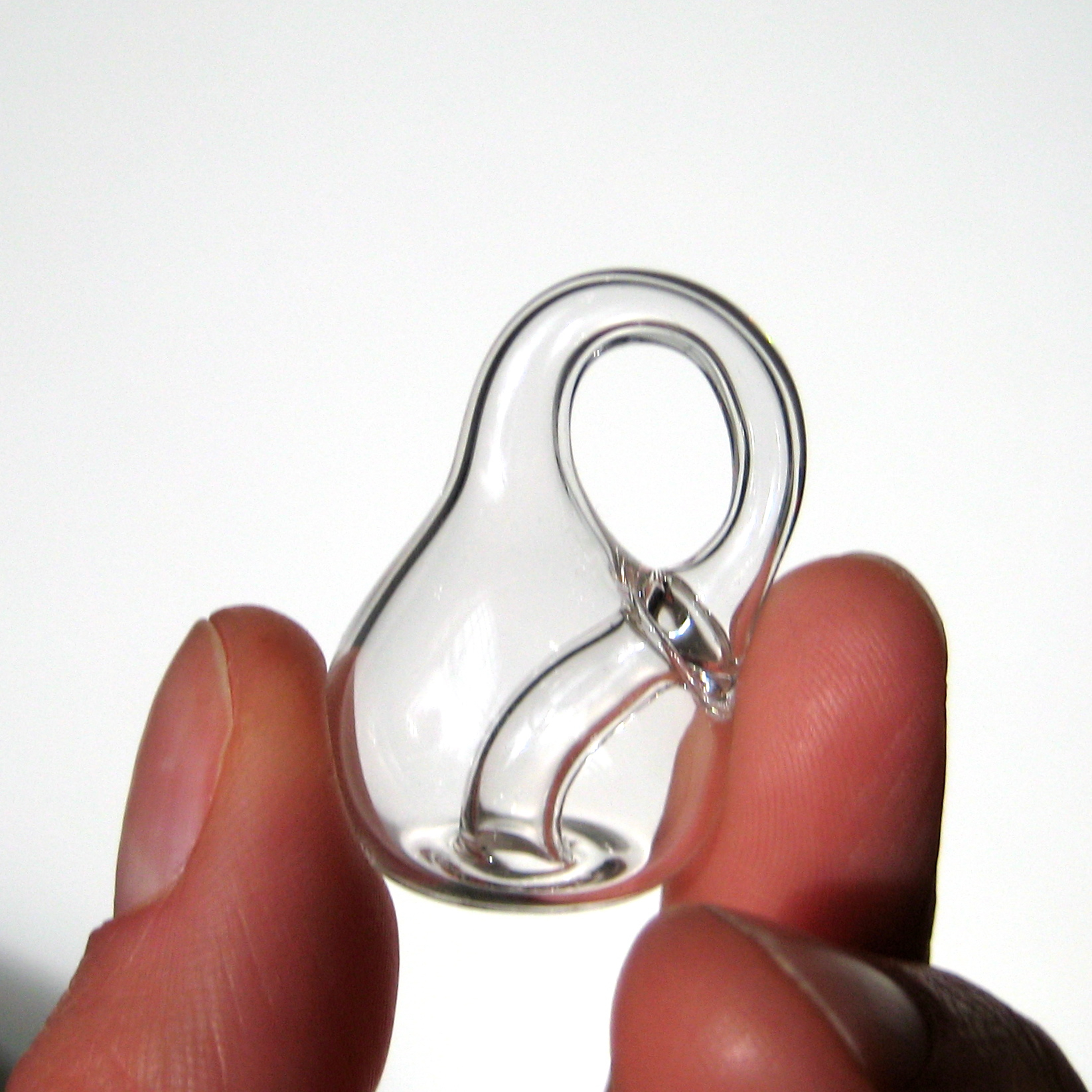 Once the glass is hot enough, I can increase the temperature of the fire to bring the glass up to a working temperature. Glass is a poor conductor of heat, so I can hold on to the glass while I am working with it in the fire and my hands will not get hot. I use a Carlisle CC torch which runs on propane and oxygen. The flame will get hotter than five thousand degrees Fahrenheit. I use a variety of tools to form and shape the glass including tweezers, graphite paddles, graphite reamers, knives, and tongs. Once the glass is finished, I place it in my annealing oven. The oven brings the glassware up to its annealing temperature and removes any of the stress that occurs in the glass while I am working with it.
Once the glass is hot enough, I can increase the temperature of the fire to bring the glass up to a working temperature. Glass is a poor conductor of heat, so I can hold on to the glass while I am working with it in the fire and my hands will not get hot. I use a Carlisle CC torch which runs on propane and oxygen. The flame will get hotter than five thousand degrees Fahrenheit. I use a variety of tools to form and shape the glass including tweezers, graphite paddles, graphite reamers, knives, and tongs. Once the glass is finished, I place it in my annealing oven. The oven brings the glassware up to its annealing temperature and removes any of the stress that occurs in the glass while I am working with it.
https://www.youtube.com/watch?v=EHh062Idu9w
Why the interest in miniature works of glass?
I lived in Jersey City, NJ for nine years. Apartments can be very expensive there which usually translates to a tiny living space. Most of my friends had small apartments with limited space to put things. 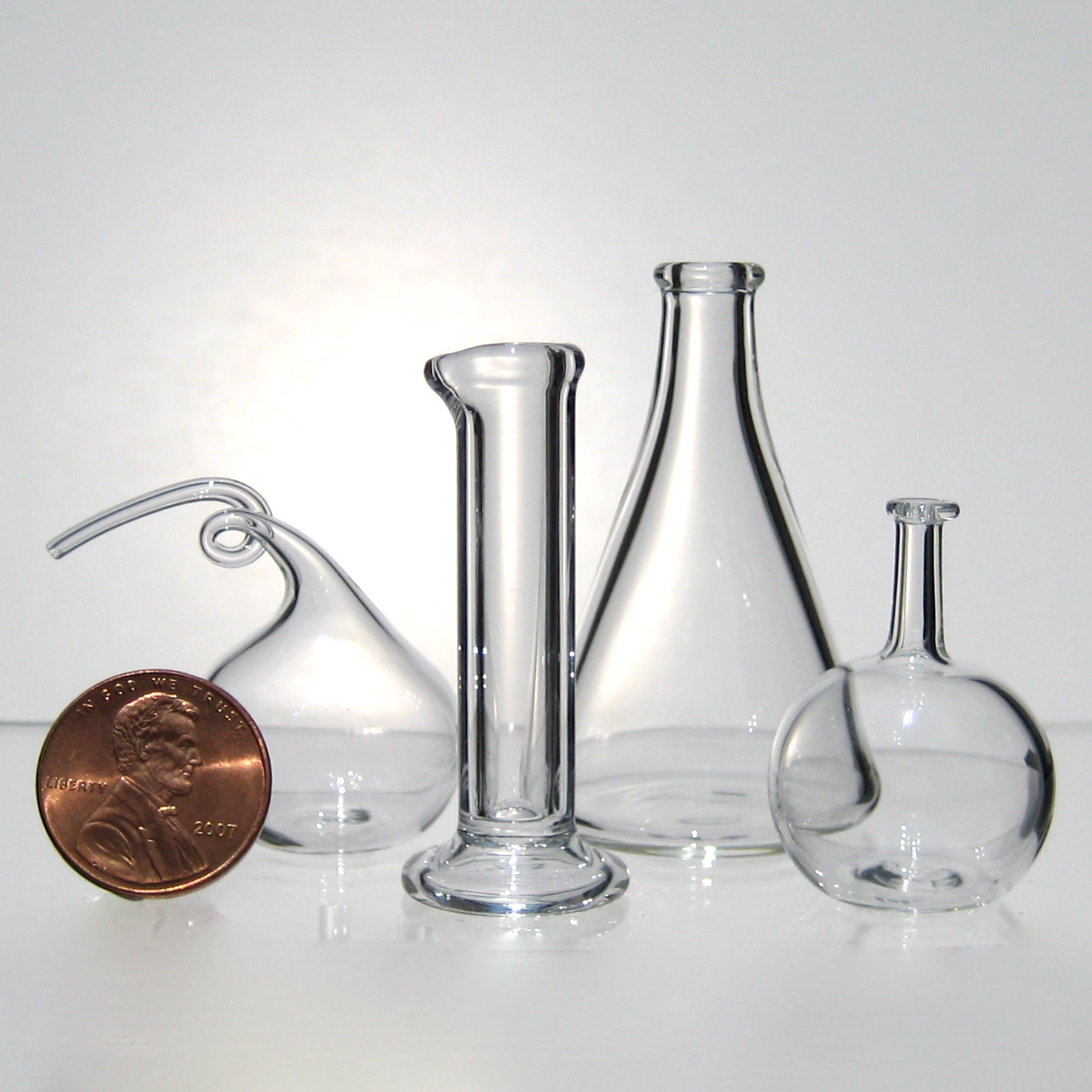 When I was first trying to sell my glass a lot of people told me that they loved my work, but didn’t have room for it in their house. I then thought that if I made tiny glassware, my friends would have room to put it in their house. The miniature glassware has received a great response, and I haven’t stopped making it since.
When I was first trying to sell my glass a lot of people told me that they loved my work, but didn’t have room for it in their house. I then thought that if I made tiny glassware, my friends would have room to put it in their house. The miniature glassware has received a great response, and I haven’t stopped making it since.
Advice for beginner artists?
Make exceptional work! Make things that no one has ever seen before. Be innovative. Don’t get discouraged if your work doesn’t sell right away. Think about the long game. Remember, you do this because you love it, not because you are trying to make tons of money. Give yourself permission to be creative and to make what is in your head, even if you think it might not be received well. And also, make exceptional work!!!
Tool or technique you can’t live without?
Most of the tools and techniques that I can’t live without at this point are things that I have innovated.
Who do you look to for inspiration?
Dante Marioni, Cesare Toffolo, Joe Peters, Daniel Coyle, Jupiter Nielsen and many others.
What’s to come from Kiva Ford?
I just finished a very busy schedule of teaching all over the country and demonstrating at the Corning Museum of Glass to celebrate the 100th anniversary of Pyrex glass. Right now I am looking forward to staying in my shop and working on a few new ideas. 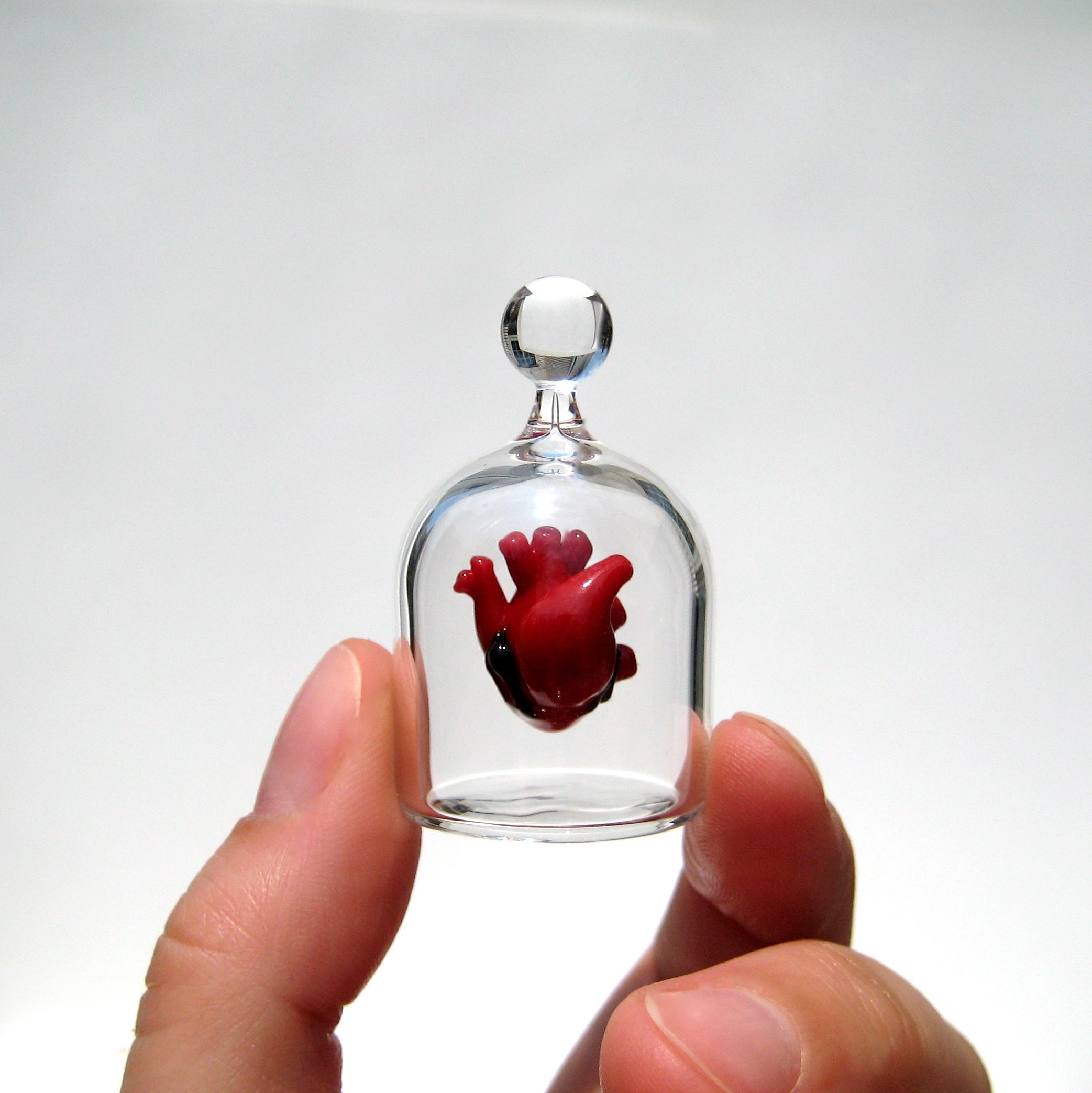 I do have a few big things planned for next year, but nothing is totally set in stone right now, so stay tuned!
I do have a few big things planned for next year, but nothing is totally set in stone right now, so stay tuned!
Other activities you enjoy?
I love juggling. I was a professional juggler for 13 years. Juggling really keeps me in the present and keeps me focused, almost like a meditation.
Kiva Ford is currently based in Indiana. View more of his incredible miniature glass work on his website. You can also follow Kiva Ford on Instagram and Facebook.
